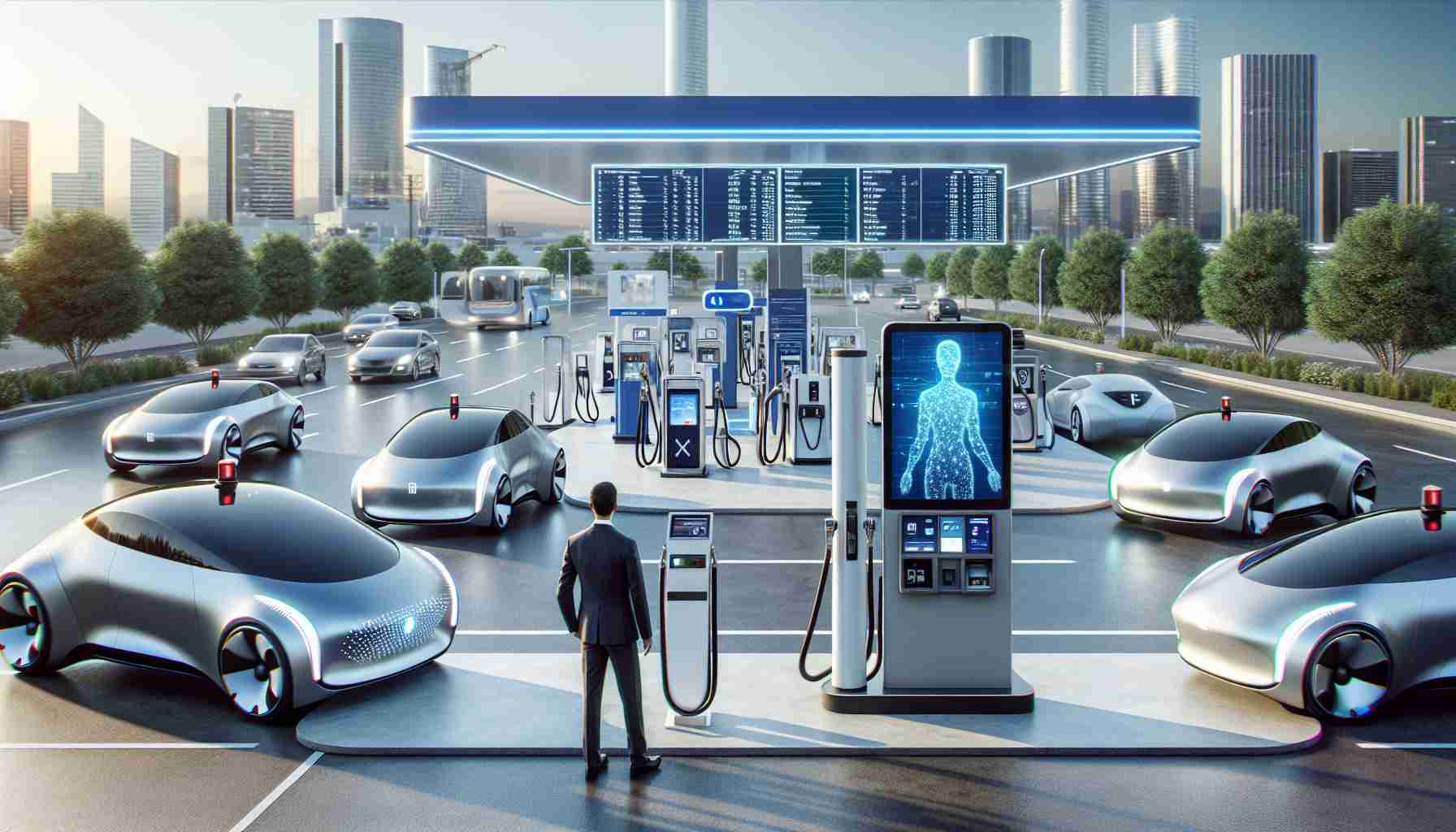Traffic congestion has become a global problem, particularly in urban cities, leading to increased traffic jams and pollution. As urban populations continue to grow and vehicle ownership rises, the impact of congestion on our daily lives will only worsen. Longer queues in front of fuel stations are expected due to the increasing demand for fuel in these regions. The fuel and gas industry is now seeking support and solutions to solve this pressing issue.
Integrating artificial intelligence (AI) technologies offers a promising pathway to optimize fuel station queues. The Asia-Pacific region, in particular, is expected to experience the highest growth in AI implementation in the fuel market in the coming years, aiding in the relief of road congestion. According to a report from SkyQuest, the value of artificial intelligence in the Fuel Market was estimated at $2.32 billion in 2021 and is projected to reach $5.32 billion by 2030, growing at a CAGR of 8.76% from 2022 to 2030.
Understanding the Challenge
India, despite being a developing country, has a relatively small percentage (7.5%) of households owning a car. However, the issue lies not in the number of vehicles within the country, but rather in their concentration in a few selected cities, particularly metropolitan areas such as Delhi, Bangalore, Mumbai, Chennai, and Kolkata. Fuel stations play a vital role in urban transportation, and the convergence of vehicles during refueling leads to longer queues, especially during peak hours. These queues not only inconvenience drivers but also contribute to traffic congestion, air pollution, and wasted fuel. The traditional manual approaches to managing queues often result in inefficiencies and long wait times.
How AI Optimizes Fuel Station Queues
AI-driven solutions utilize data analytics, predictive modeling, and real-time optimization algorithms to dynamically manage fuel station queues. By analyzing historical data, traffic patterns, and current demand, AI systems can anticipate fluctuations in fuel consumption and adjust queue management strategies accordingly. Furthermore, these solutions utilize real-time data from various sources, including edge controllers, CCTV footage, and dispensing infrastructure. The effectiveness of these solutions lies in their ability to automate the queue management process, especially during peak hours, by minimizing wait times, optimizing resource allocation, and improving overall vehicle flow.
Key Aspects of AI-Driven Queue Optimization:
1. Data Integration and Analysis: AI collects and analyzes real-time data, including current traffic volume, vehicle types, fuel consumption patterns, and historical queue data, to generate accurate predictions of future demand.
2. Dynamic Queue Management: AI continuously optimizes queue management strategies based on real-time data inputs. This dynamic approach allows fuel stations to quickly adapt to changing demand patterns, reducing wait times and enhancing customer satisfaction.
3. Automated Resource Allocation: AI-driven systems automate the allocation of fuel pumps, payment lanes, and other resources based on current demand and queue lengths. By optimizing resource utilization, fuel stations can maximize throughput and minimize congestion.
Conclusion
As cities grapple with urban congestion, investing in AI-driven congestion management and queue optimization solutions is a crucial step towards developing a more efficient and sustainable transportation network. These technological advancements harness the power of data analytics, predictive modeling, and real-time optimization to revolutionize urban congestion and alleviate long queues at fuel stations. Such innovations have the potential to transform the urban landscape, improving traffic flow, and benefiting both the community and the environment.
FAQ
Q: How does AI optimize fuel station queues?
A: AI-driven solutions leverage data analytics and real-time optimization algorithms to manage queues effectively. By analyzing historical data and current demand, AI systems can anticipate fluctuations in fuel consumption and adjust queue management strategies accordingly.
Q: What are the benefits of AI-driven queue optimization?
A: AI-driven solutions prioritize efficiency by minimizing wait times, optimizing resource allocation, and improving the overall flow of vehicles. They adapt quickly to changing demand patterns, reducing congestion and enhancing customer satisfaction.
Q: What aspects of fuel station queues does AI focus on?
A: AI technology focuses on data integration and analysis, dynamic queue management, and automated resource allocation to optimize fuel station queues.
Sources:
– SkyQuest: https://www.skyquestt.com/
FAQ
Q: How does AI optimize fuel station queues?
A: AI-driven solutions leverage data analytics and real-time optimization algorithms to manage queues effectively. By analyzing historical data and current demand, AI systems can anticipate fluctuations in fuel consumption and adjust queue management strategies accordingly.
Q: What are the benefits of AI-driven queue optimization?
A: AI-driven solutions prioritize efficiency by minimizing wait times, optimizing resource allocation, and improving the overall flow of vehicles. They adapt quickly to changing demand patterns, reducing congestion and enhancing customer satisfaction.
Q: What aspects of fuel station queues does AI focus on?
A: AI technology focuses on data integration and analysis, dynamic queue management, and automated resource allocation to optimize fuel station queues.
Definitions:
– AI (Artificial Intelligence): The simulation of human intelligence processes by machines, especially computer systems, to perform tasks that would typically require human intelligence.
– CAGR (Compound Annual Growth Rate): The compound annual growth rate represents the growth rate of an investment over a specific period, assuming that profits are reinvested at the end of each year of the investment’s lifespan.
– CCTV (Closed-Circuit Television): A system in which video cameras transmit signals to specific monitors or recorders for surveillance and security purposes.
– Queue: A line or sequence of people or vehicles waiting for a service or to proceed.
– Optimization: The action of making the best or most effective use of a resource or situation.
Related Links:
– SkyQuest: link name

